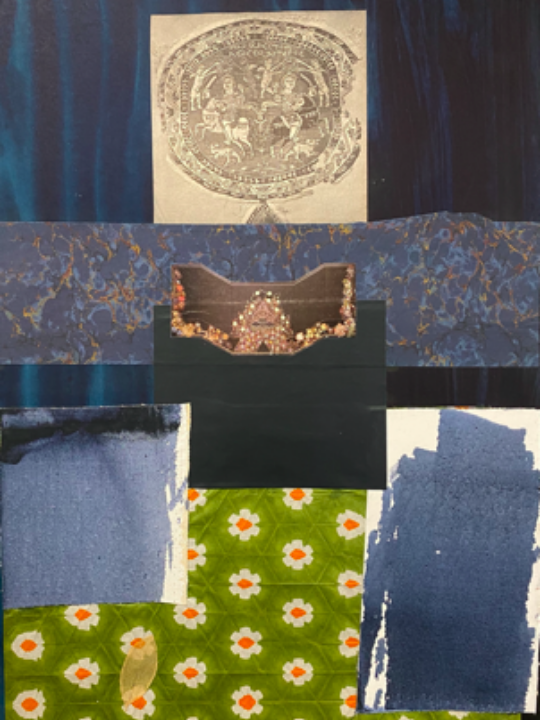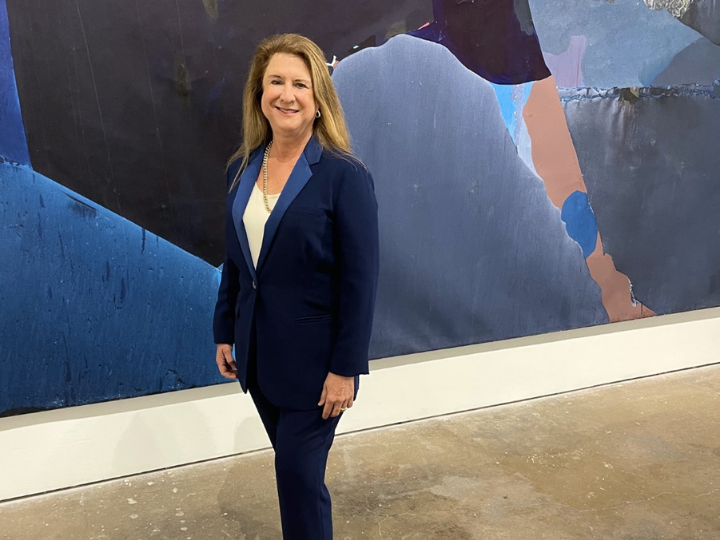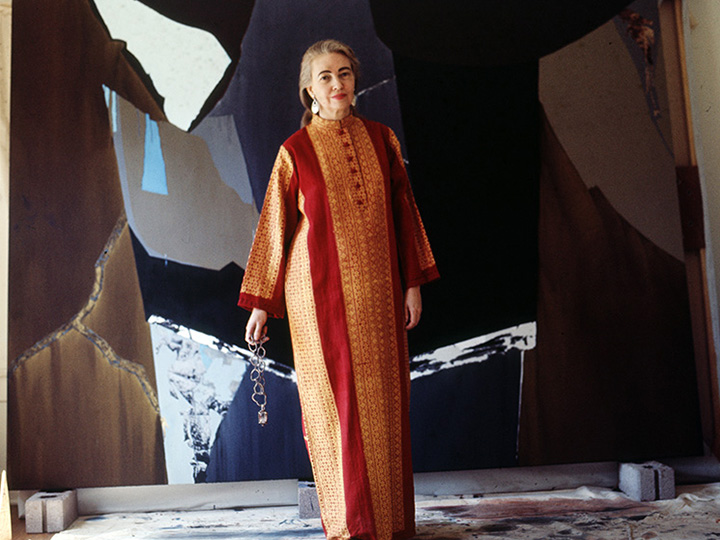


The University of Houston is enriching its collection of Dorothy Hood treasures with a donation of the Texas painter's work to Public Art of the University of Houston System. "Coptic Days," a painting and mixed media collage created by the late artist, is a gift from Houston gallerist Deborah Colton.
María C. Gaztambide, Public Art UHS director and chief curator, calls the piece a "phenomenal example" of one of the most interesting periods in Dorothy Hood's trajectory. "Coptic Days" is part of a rare group of works from the early 1980s that bridge her painting and collage practices.
"In this little-known series, titled 'Shards of the Earth,' she begins to experiment with the textiles, paper cutouts, color blocking and liquid pigment that later became the visual vocabulary of her collages. Yet, they form a continuum with Hood's paintings in their familiar fragmented landscapes, investigations of surface and literal space and even in the canvas fragments (or 'shards') that she folds in," said Gaztambide.
Hood was a seminal figure in midcentury American modernism, fusing the Mexican and New York schools through a Texas borderland ethos. As with many women artists of her generation, Hood, who died in 2000 at 81, is only now beginning to receive critical attention.
"Dorothy Hood's work is timeless, and her epic paintings inspire us to look far beyond ourselves into the universe, but also look at ourselves within the universe," said Colton about the Texas icon, who in the early 1960s worked at a Houston gallery and as an instructor at the Museum of Fine Arts, Houston Museum School. "Dorothy Hood once said, 'You're looking at the outside of things doing representational and the inside of things doing abstract.' Her collages are an example of this."
A longtime supporter of UH and volunteer for the "Here, We Go" campaign's Libraries Campaign Committee, Colton was instrumental in facilitating the donation of an extensive archive of thousands of personal documents to UH Libraries Special Collections that belonged to Hood and her husband José María Velasco Maidana, a Bolivian composer and filmmaker. The bulk of the materials came from the Art Museum of South Texas (AMST) in Corpus Christi. They include personal papers, poetry, photographs, catalogs, scrapbooks as well as audio/video recordings spanning 70 years of the lives and careers of Hood and Maidana.
Gaztambide and the Public Art UHS curatorial team will install "Coptic Days" in the lobby of Special Collections in the MD Anderson Library, emphasizing the importance of Hood's work. Gaztambide is developing a partnership with the AMST to bring additional artworks to UH to round out the Hood collection.
"We are intent on establishing UH and the UH System as the premier destination for scholars, students and others interested in her work. The expanding body of Hood artworks in the Public Art UHS collection, together with the incredible archival holdings available at UH Special Collections, are fueling this transformation," she explained.
Colton's donation of "Coptic Days" adds to two other Dorothy Hood works in the Public Art UHS permanent collection: "The Angel's Key" (1987) in the Wortham Theatre Lobby at UH and "Time the Bridge of Doors" (c. 1979) in the Bayou Building of the University of Houston-Clear Lake. A third painting by Hood, "Homage to Matisse" (c. 1969), is part of the Print Study Collection of the UH Kathrine G. McGovern College of the Arts and on view in the lobby of the Bert F. Winston Jr. Band Complex.
"'Coptic Days' compliments our Dorothy Hood holdings very nicely. Visually it relates to the large-scale 'Time the Bridge of Doors,' but more specifically, it foreshadows 'The Angel's Key' in its spatial organization and generous gouache-like planes of color. Needless to say, we couldn't be happier with Deborah's generous gift," Gaztambide shared.
You can learn more about Hood's paintings and other works in the expansive Public Art UHS collection by visiting the Public Art UHS website.






